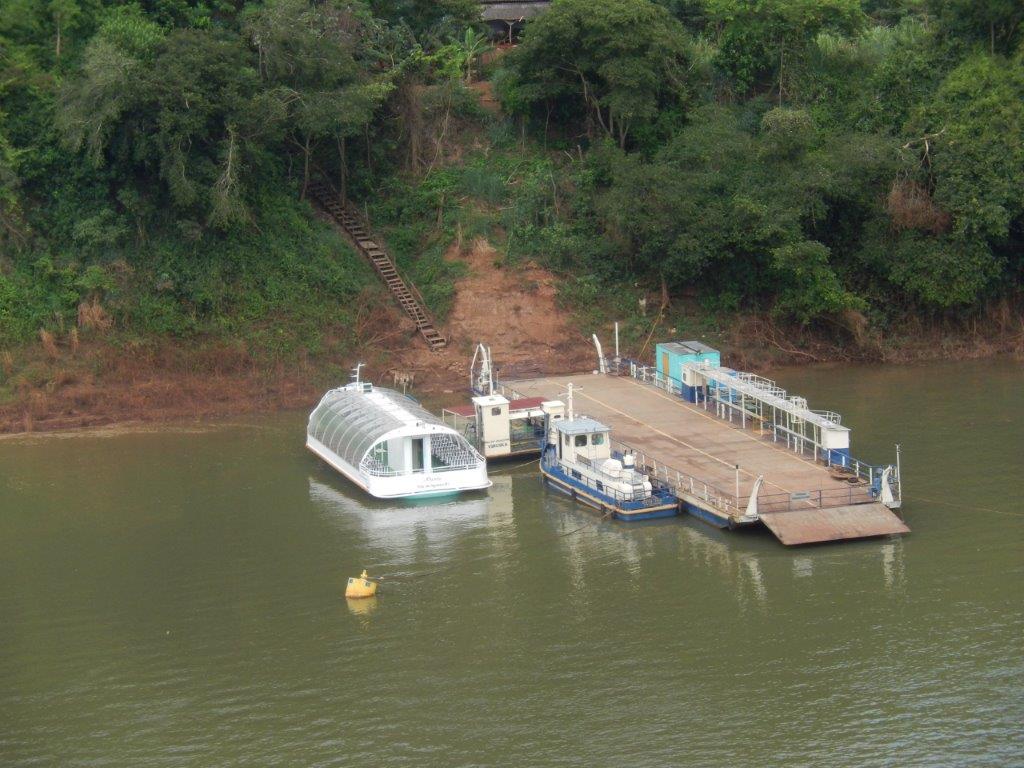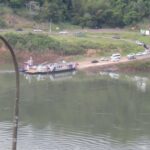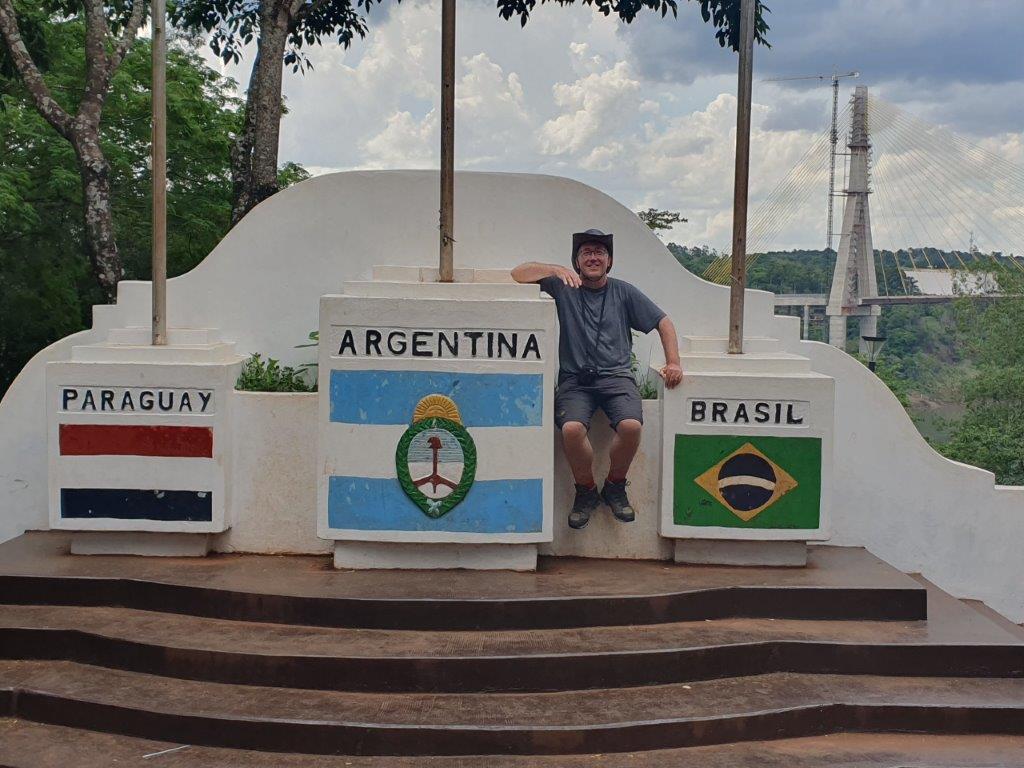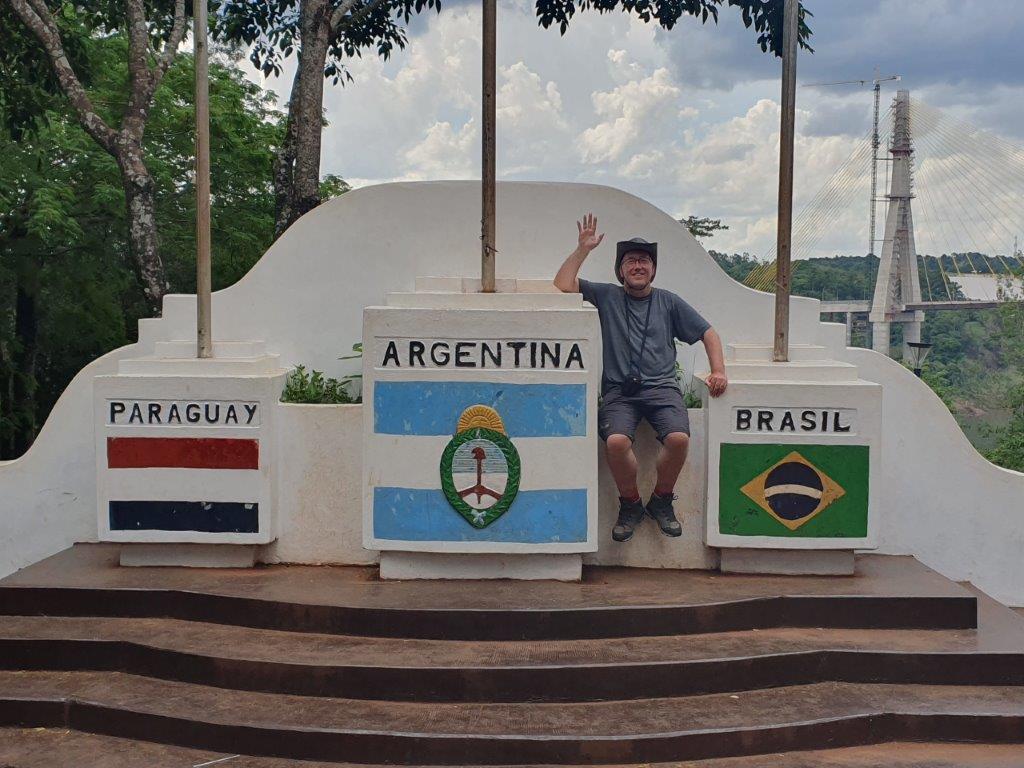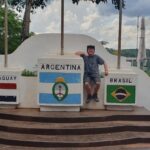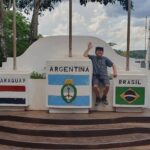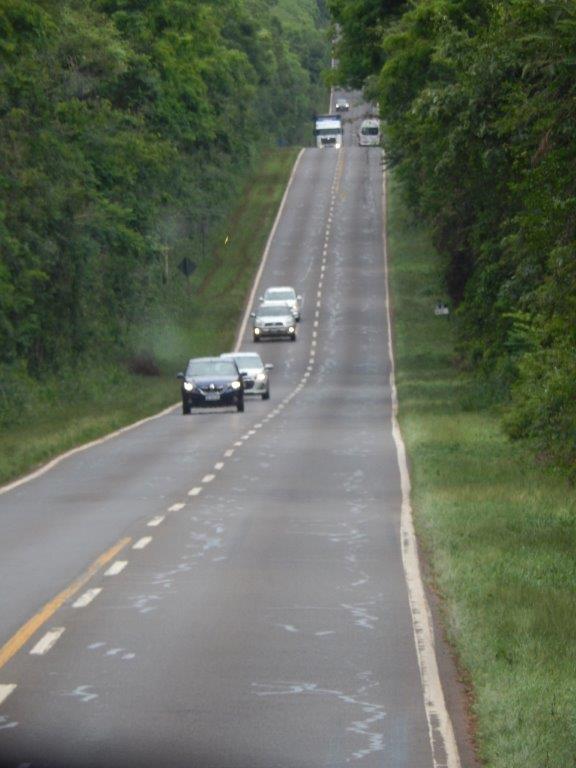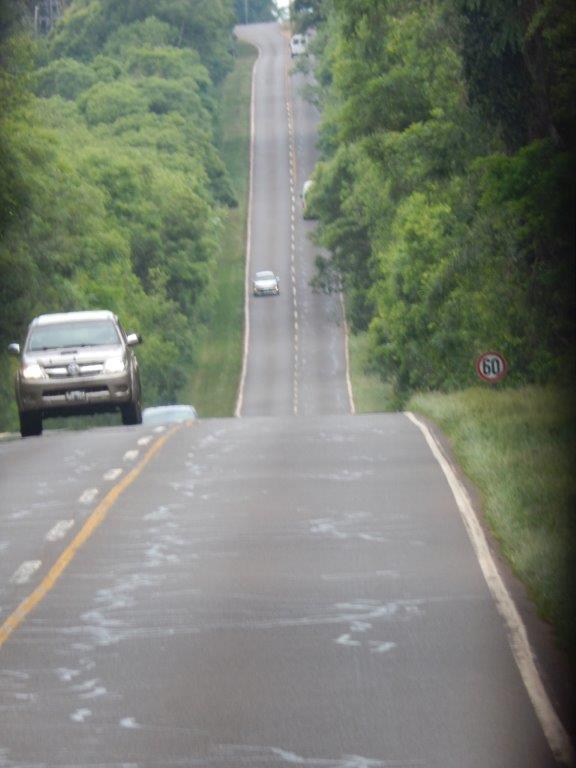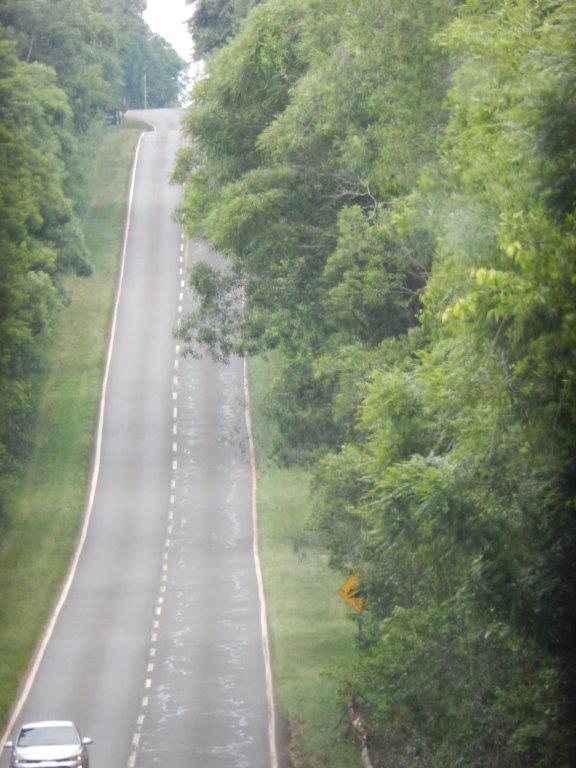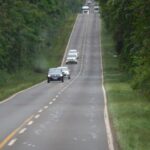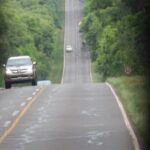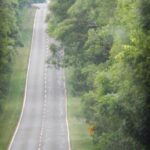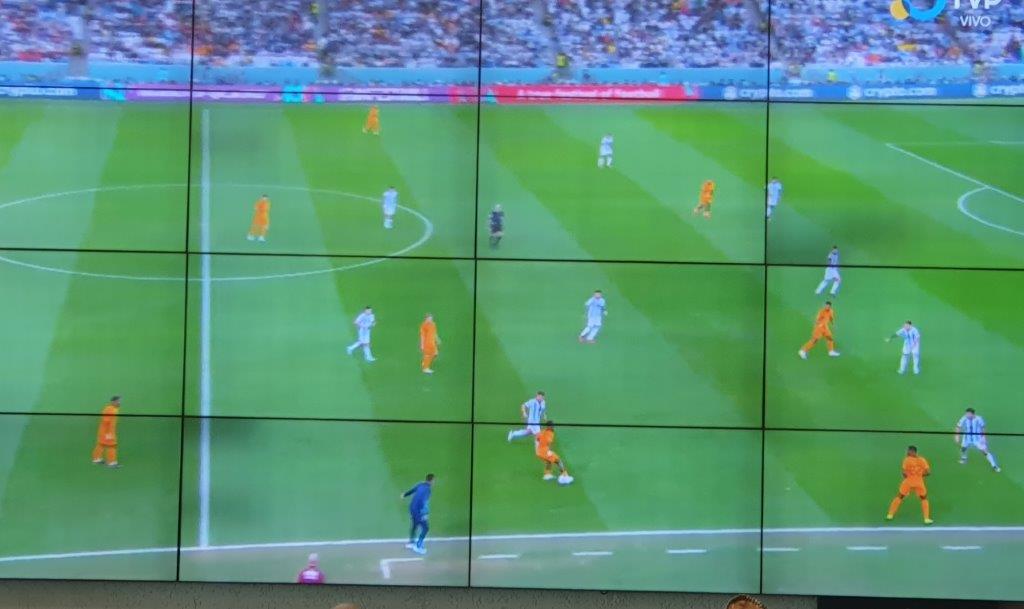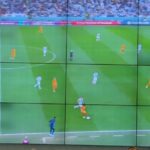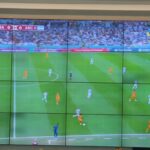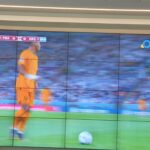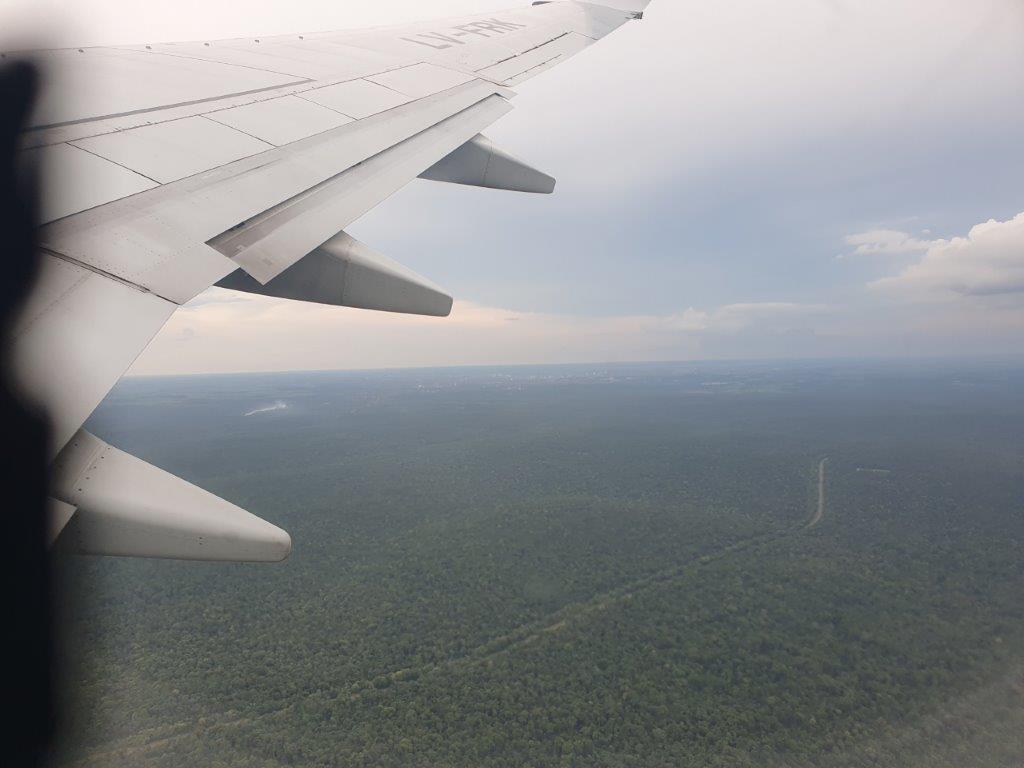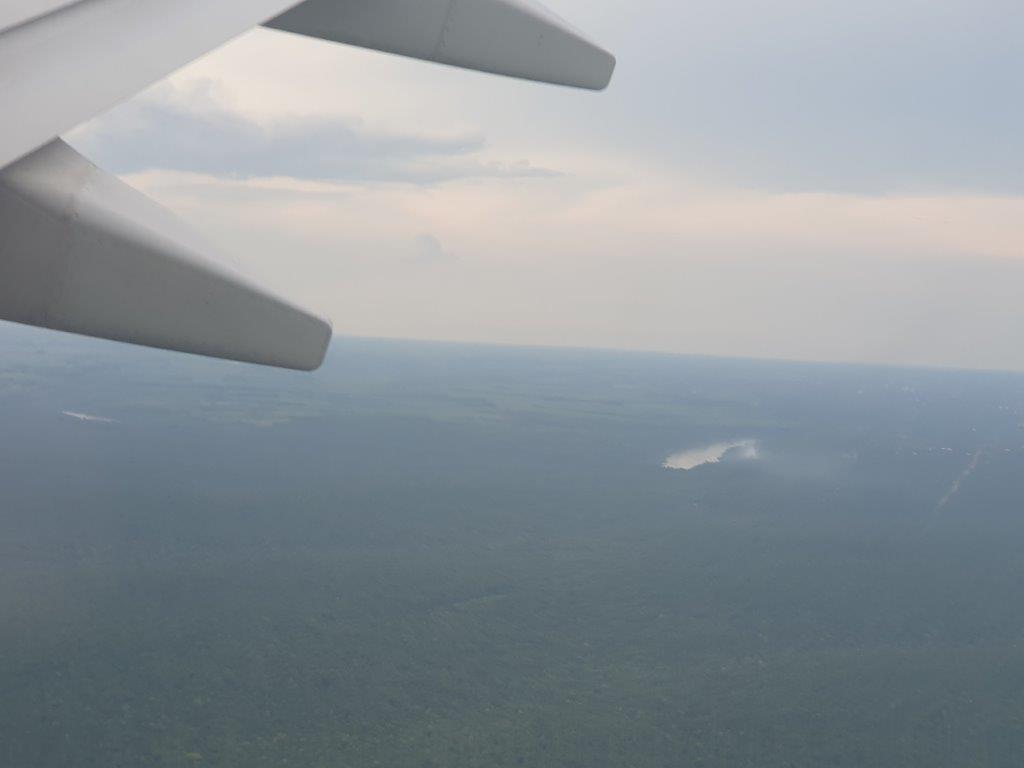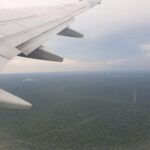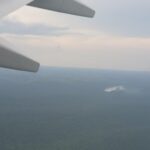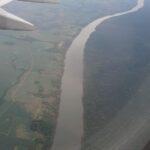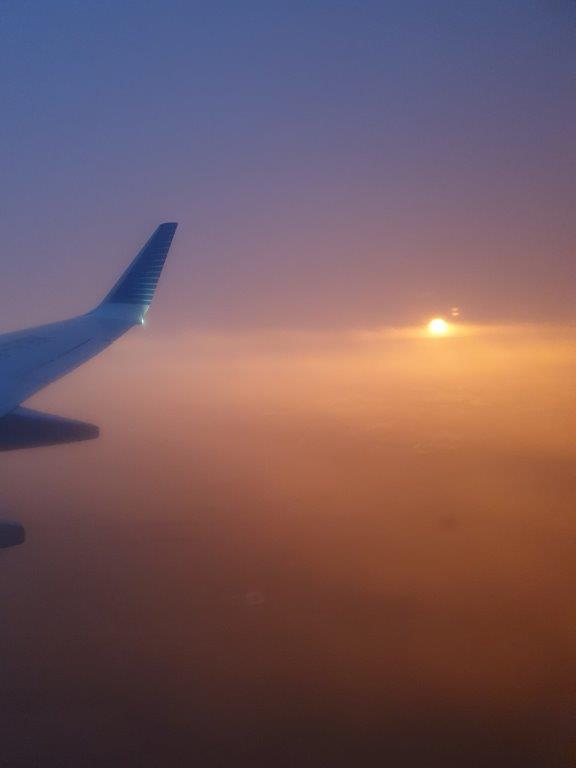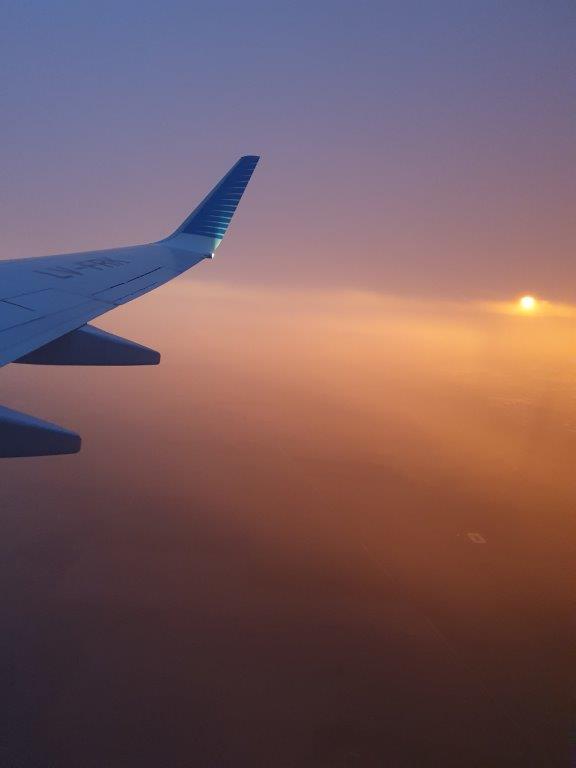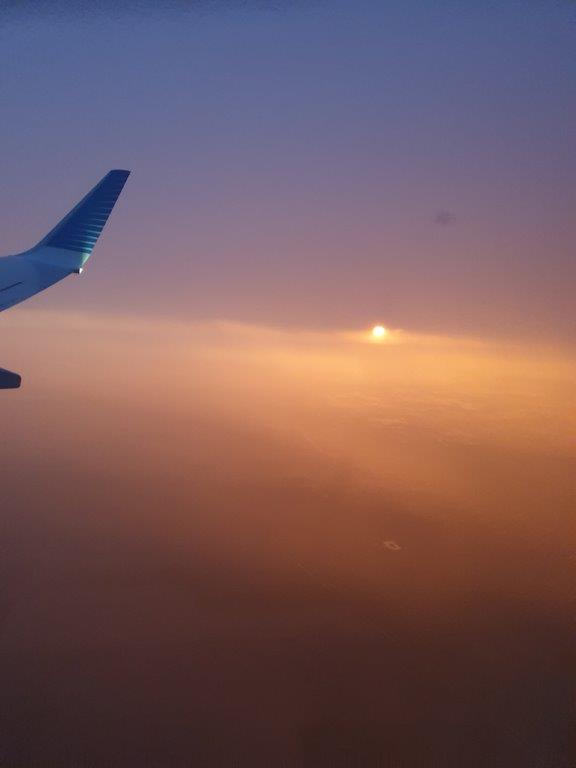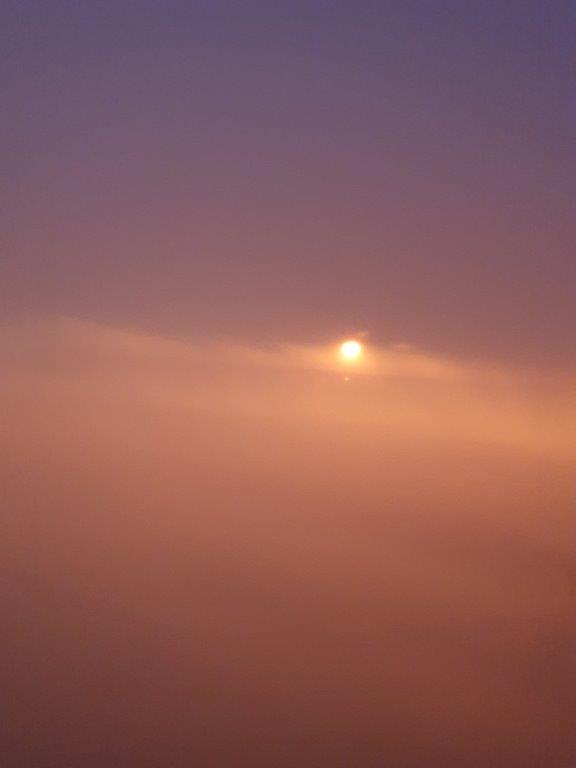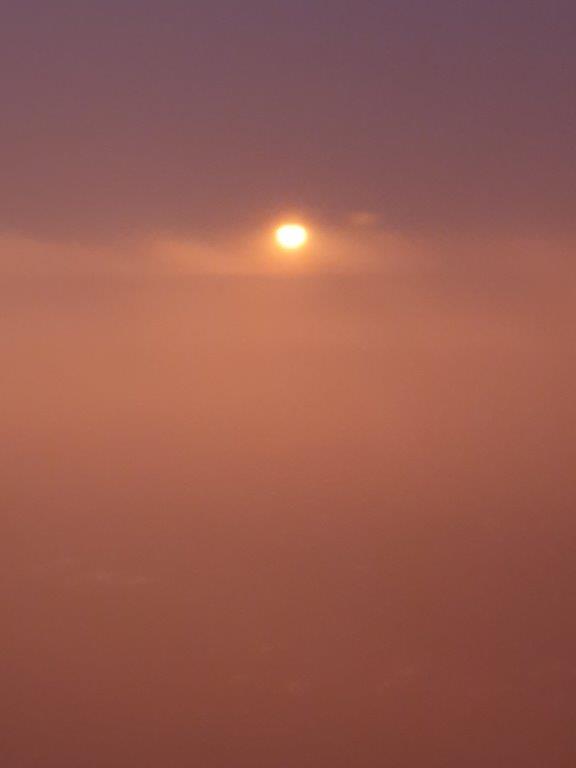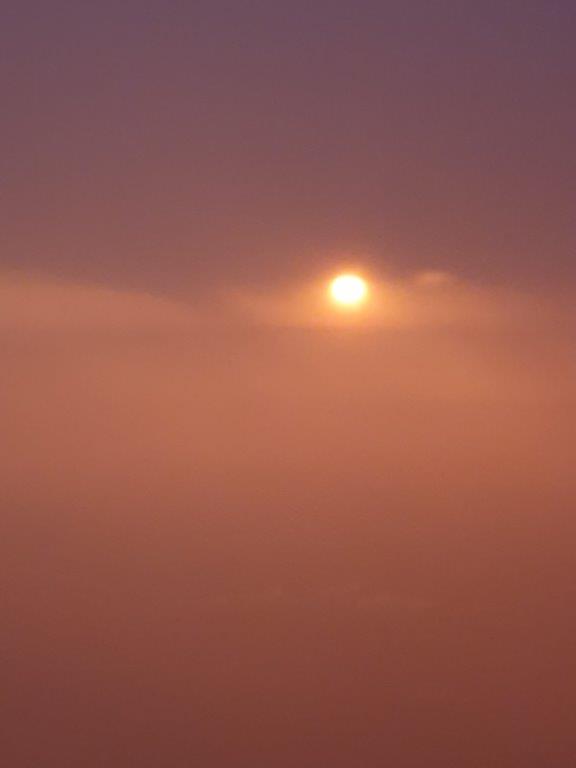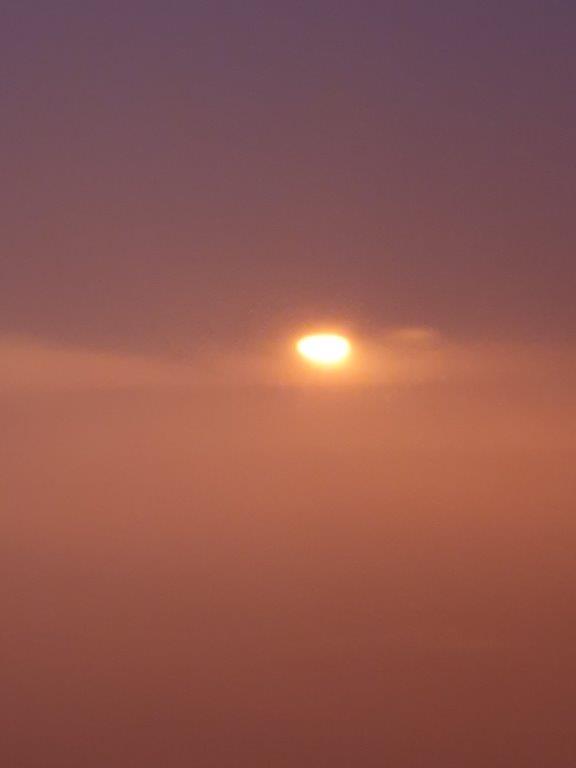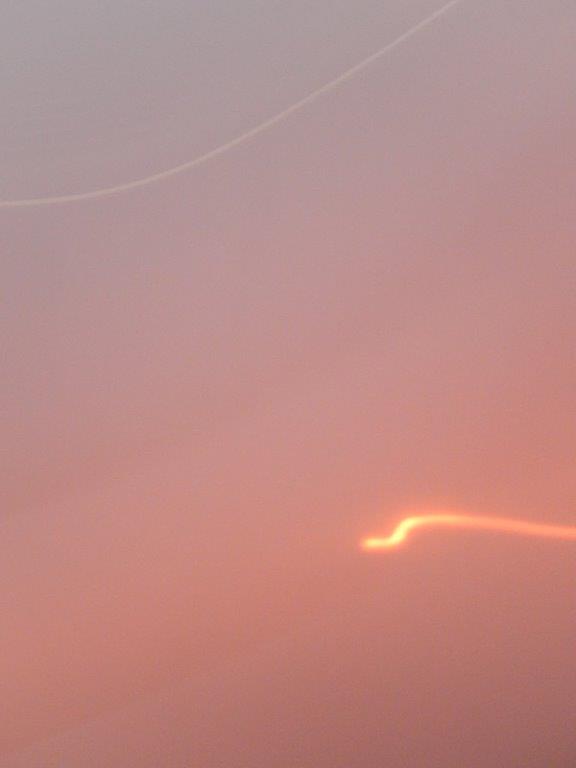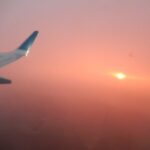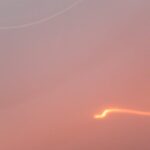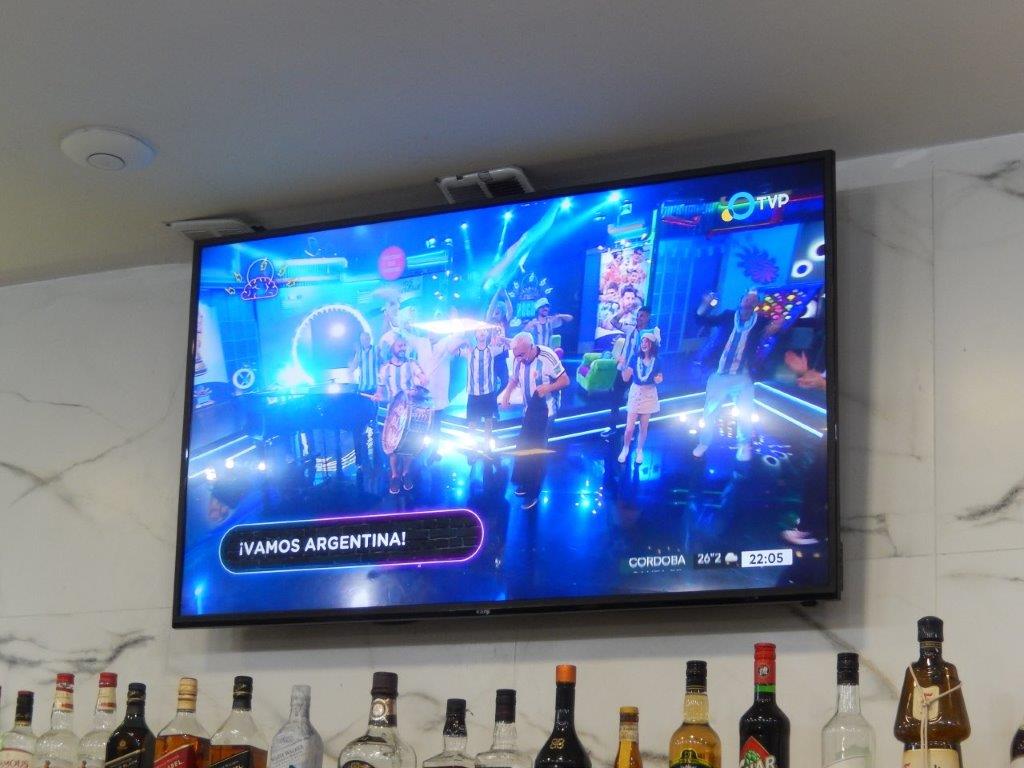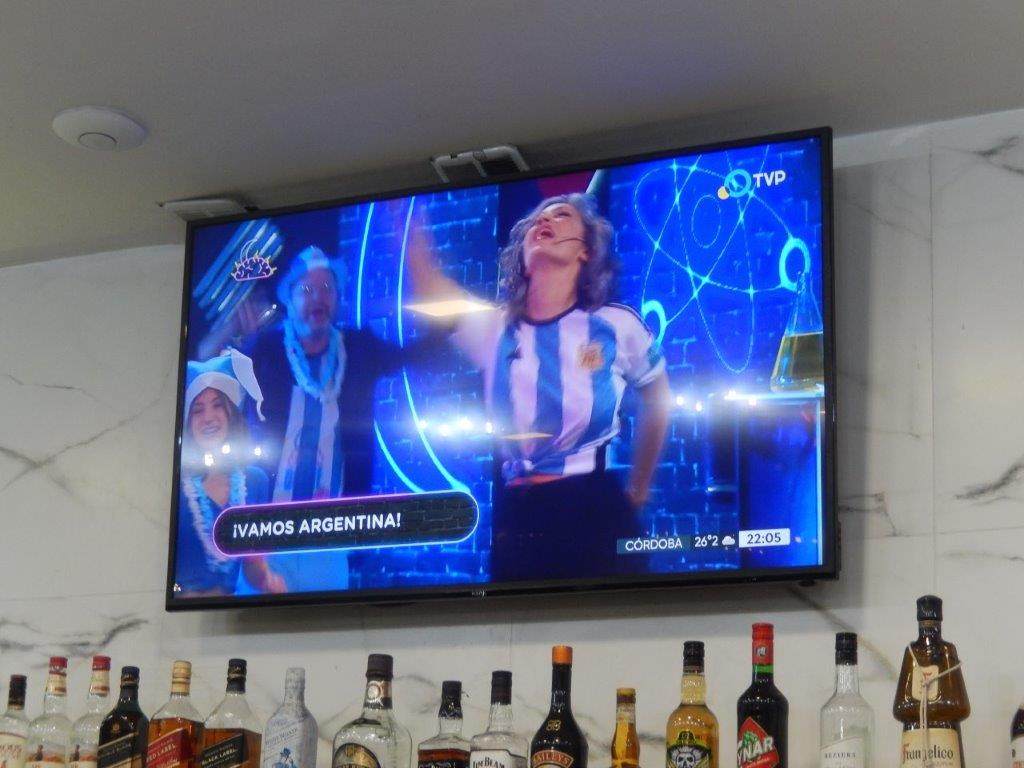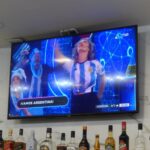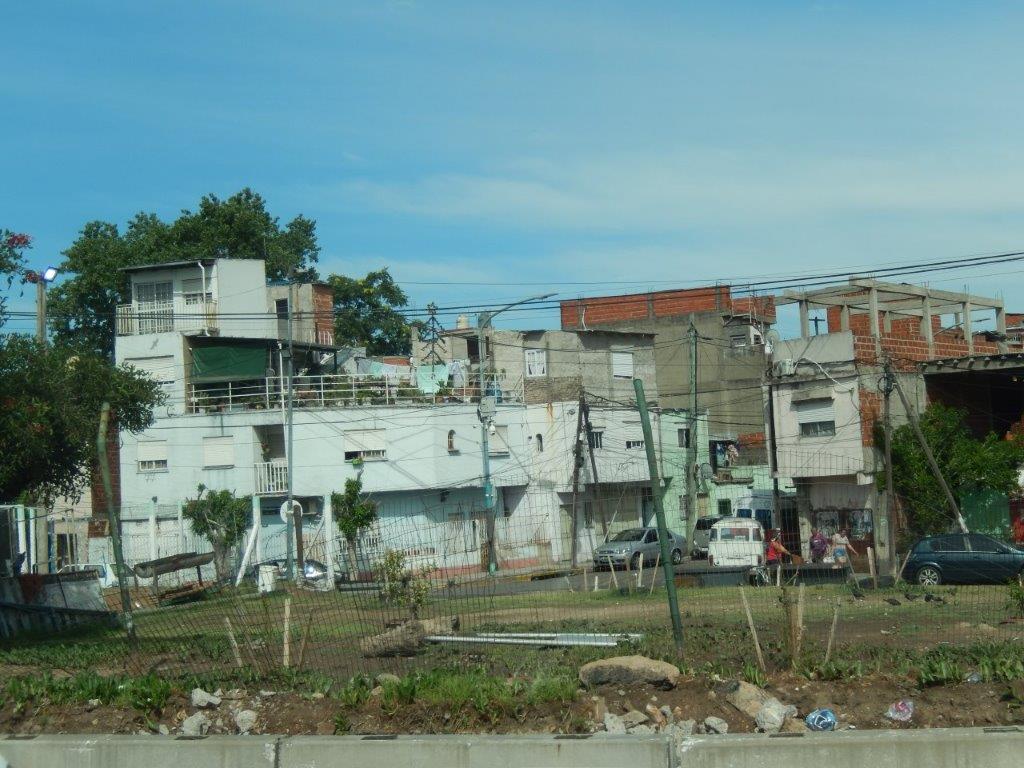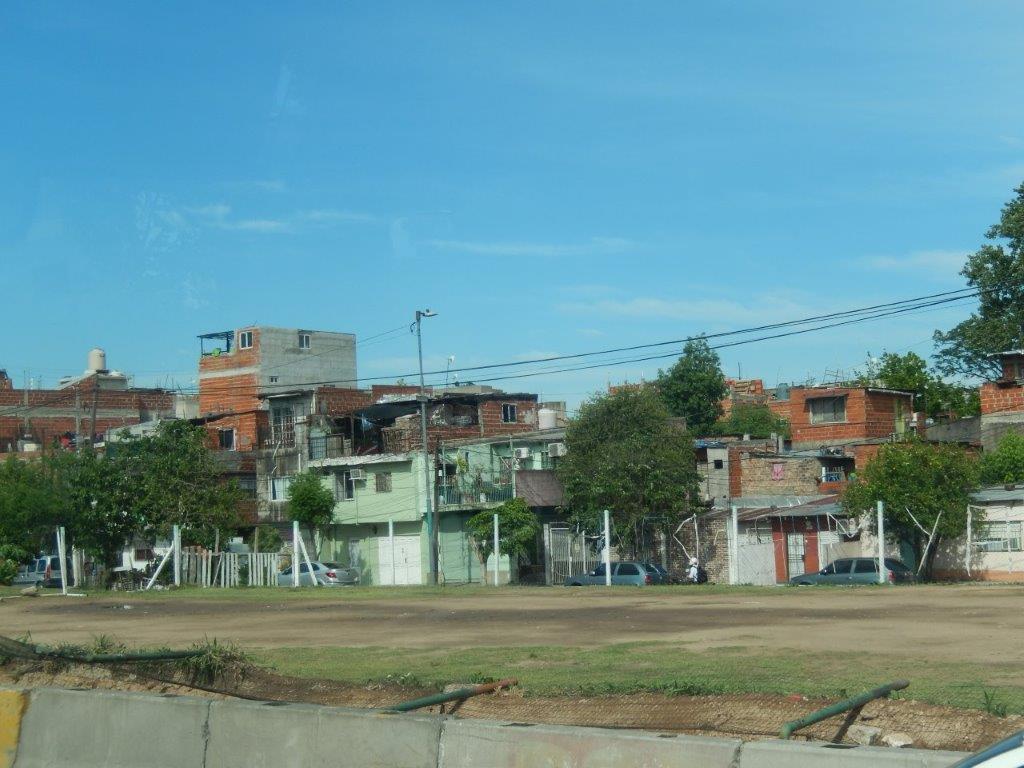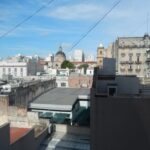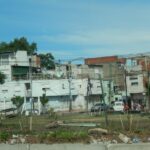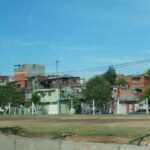53. Argentina: Three country point, football disaster and goodbye to Argentina
Near Iguazu Falls, I’m guessing about 20 kilometers to the west, downstream of the Iguazu river, is the end of the river, where it merges in the larger Parana river (the 2nd largest river of South America after the Amazon). Somewhere in the middele of the Parana river is the point where Brazil, Argentina and Paraguay meet eachother.
Before leaving the Missiones province of Argentina and also before almost ending the South American adventure, The Wandelgek wanted to visit this three country point.
To get there, he drove from his resort toward and through the small town of Puerto Iguazu…
Puerto Iguazu
Puerto Iguazú is a border city in the province of Misiones, Argentina. With a population of 82,227 (2010 census), it is the fourth largest city in the Province, after Posadas, Oberá, and Eldorado.
Spanish explorer Álvar Núñez Cabeza de Vaca became, in 1542, the first European to discover what are now called Iguazú Falls. He was drawn by the noise of the water, which can be heard at a distance of several kilometers. When the Spanish arrived in the 16th century, the Guaraní people were the principal inhabitants of the area.
Despite its early exploration, the area remained occupied only by the Guaraní Indians until 1880. Corrientes Province, which at that time included what is now Misiones, sold 50 square leagues (13,000 square kilometres (5,000 sq mi)) at the current site of Puerto Iguazú near the falls in 1881. The land changed hands three times in the course of just two years, and ended up as the property of Gregorio Lezama. At that time Misiones separated from Corrientes. Lezama funded a scientific expedition to explore the territory, enlisting Carlos Bosetti and Jordan Hummel for that purpose. Those two explorers later organized the first tourist trip to the falls; Lezama sold the land in 1888 to Martín Errecaborde and Company.
Territorial Governor Rudecindo Roca established Iguazú Department, one of 5 initial subdivisions in Misiones, in 1882. A Justice of the Peace, Alberto Mujica, was assigned to the area in 1897. The firm of Gibaja y Núñez opened the town’s first hotel at this time to serve the growing numbers of tourists visiting Iguazú Falls. One of these, Victoria Aguirre, funded the first road into the town in 1901 as well as other civic improvements, and it was in her honor that on September 10, 1902, the settlement was formally established as Puerto Aguirre. A police department (1913), a civil registrar (1916), and a post office (1928) followed.
The Iguazú National Park was established as such by the national government in 1934, and in 1943 the town was renamed Puerto Iguazú. The Tancredo Neves Bridge, connecting the city with neighboring Foz do Iguaçu (Brazil), was opened in 1985.
The world-renowned Iguazú Falls are only 18 kilometres (11 mi) away from the city, and as a result the city has developed much of its infrastructure around tourism.
The strangest thing I saw driving through was this town square where Santa was dressed in his famous red coat, wearing his red pointy hat and his long white beard. Remember, it was still 35 degrees Celsius overhere 😉 .
Merging of 2 rivers
A bit outside of Puerto Iguazu is where the Iguazu river coming from the West, merges with the Parana river coming from the north, streaming south towards the Rio de la Plata at Buenos Aires. A bridge connected Brazil and Paraguay. Argentina and Brazil were also connected by a bridge but that one was near Foz de Iguazu.
 Somewhere in the middele of the river at the conjunction, is where Brazil, Argentina and Paraguay meet. The photo was taken from the Argentine side of the river Iguazu. Straight forward across the river Iguazu is Brazil…
Somewhere in the middele of the river at the conjunction, is where Brazil, Argentina and Paraguay meet. The photo was taken from the Argentine side of the river Iguazu. Straight forward across the river Iguazu is Brazil…
 … and to the left across the river Parana is Paraguay…
… and to the left across the river Parana is Paraguay…
 The Wandelgek did not have time to cross the river but it seemed there was a ferry connection into Paraguay from Argentina and also a ferry connection into Brazil…
The Wandelgek did not have time to cross the river but it seemed there was a ferry connection into Paraguay from Argentina and also a ferry connection into Brazil…
There were some buildings at the Brazilian side, probably used for Tourism, but they looked like they had not been seeing tourist for a long time …
At the Brazilian side of the river was a large ferriswheel, indicating some sort of a lunapark, but it didn’t spin and seemed a bit of past glory, like everything else at this location did. I suppose the bright shine of the Iguazu Falls outshone everything else in its wake and this place was kinda being forgotten by most visitors of the area…
There were a few lost visitors like The Wandelgek though who were stumbling around this place. There was even a sort of monument erected which was a welcome photography object for the sparse amount of people visiting …
A bit further was another previous monument, less attractive I suppose, replaced by the larger one…
However, in the end it didn’t matter where the monument was placed, because the real three country point was underwater.
I somehow always love to see these distance markers. How far away are we from….? Well, Ushuaia was now 4331 kilometers south 🙂 . The utmost south of Argentina, compared to its most northwestern location (to behonest, more east Argentina stretches a lot further north).
Next The Wandelgek drove towards the airport of Puerto Iguazu, which was near the National Park,…
…to take the plane to Buenos Aires …
For a Dutch guy this was a strange time to visit Argentina. Before leaving Puerto Iguazu, the Dutch national football team was playing the Argentinian national team with Lionel Messi in quite an exciting game. Argentina had scored 1-0 and just before boarding the plane, The Wandelgek saw Messi scoring through a penalty: 2-0.
But then inside the plane the vibe changed dramatically. First the happy Argentinians became more silent and next stewardesses were even crying as they passed my seat.
The sunset seen from the plane was incredibly beautiful, but attention was divided over this and news about the game. Could the Dutch still win this?
Then it became clear that the Dutch team had scored twice: 2-2. After landing however it appeared that Messi had scored again and this time there was no Dutch goal to follow.
I expected to see large crowds of Argentinians in Buenos Aires to celebrate this victory, but it was quite peaceful in the streets and the square around the Obelisk was almost empty. It was obvious why. The weather had decided to express itself mirroring the sorrow of the Dutch and it was emptying Heaven’s gates, pouring down rain so heavily and long that even the most fervent partying Argentine supporters had decided to go home and dry up a bit.
That meant arriving on time at the hotel.
 Next morning The Wandelgek had breakfast, before driving toward the airport, passing by the the Old Oviedo Tango teatre where the adventure started for what now seemed a lifespan ago but was actually a few weeks ago. Then passing by the poorer suburbs of BA…
Next morning The Wandelgek had breakfast, before driving toward the airport, passing by the the Old Oviedo Tango teatre where the adventure started for what now seemed a lifespan ago but was actually a few weeks ago. Then passing by the poorer suburbs of BA…
… leaving Argentina and South America, flying home via Madrid to Amsterdam.
Conclusion:
I loved travelling Patagonia. It is breathtakingly beautiful. Although the Andes mountain range are the jewel in the crown, I really liked the marine wildlife experinces at the east coast and the rides through the Patagonian desert and on the Ruta 40 as well. The Patagonian towns all left their marks in my memories, but I liked El Chalten and Ushuaia best. And thank you for making me discover places like Manush and La Zorra, they made evenings a real pleasure !!!
The National Parks of Patagonia were mesmerizing and weather played a fantastic supporting role in this.
Hope you enjoyed my 1st Patagonian / South American adventures over the last 2 years. Now I’m gonna focus on my most recent adventures in China.
Outside of Patagonia the brief visits to Uruguay and Brazil were absolutely worth the effort. Iguazu falls is rightfully so a natural World Wonder and Colonia del Sacramento is a historic gem stone of Portuguese architecture which has been eradicated by newer architecture in a lot of places.
Hope to return to South America later, but …The World is large!










